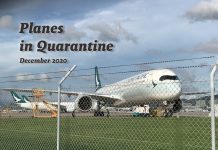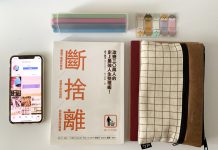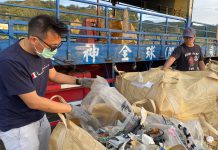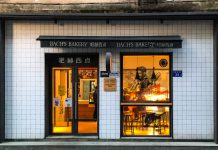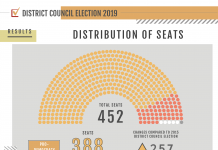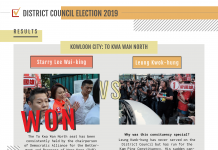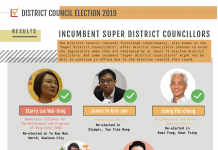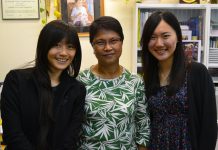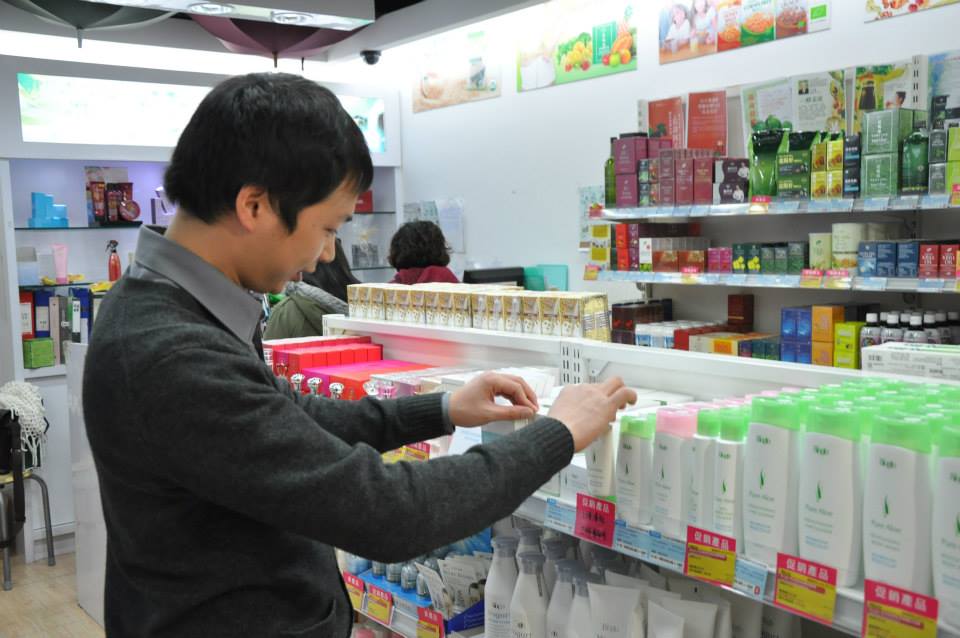Opportunities and challenges for Hong Kongers working in the Mainland
By Donna Shiu and Zoe So
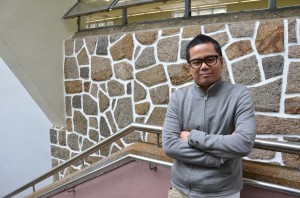
It is 7.00 a.m. and the Lo Wu Control Point is bustling with people from all walks of life. Mixed in with the crowds of young students and cross-border parallel traders are thousands of white-collar workers. Some will return to Hong Kong the same evening, while others will stay on the Mainland for the week.
These cross-boundary Hong Kong workers are just the tip of the iceberg. Many others cross at the other five control points while some commute by plane. Some have even made the Mainland their home. According to the Census and Statistics Department, over 170,000 Hong Kong permanent residents now work in China either part-time or full-time.
In this year’s policy address, Chief Executive Leung Chun-ying urged Hong Kong’s young people to consider career opportunities in China. He cited the story of a young Hong Kong entrepreneur who started a business in the Mainland after finishing his master’s degree. This young person is said to be now running a HK$100 million a year wine and food import business in Guangxi.
While the identity of the said entrepreneur remains unknown, there is nothing new about Hong Kongers heading north for jobs. The trend was given a boost after the Mainland and Hong Kong Closer Economic Partnership Arrangement, or CEPA was signed in 2003. This gave Hong Kong’s goods and services preferential access to the mainland market and allowed for the mutual recognition of professional qualifications.
Indeed, the mainland market is a big draw for professionals like architect Philip Fung Kwok-on. Apart from working for a year in Hong Kong after his studies, followed by two years in Switzerland, Fung has spent the majority of his 13-year career in China. Having worked in Beijing, Shanghai and Shantou, Fung is now based in Shenzhen.
Fung says China’s vast area gives architects like himself more space to work with and the freedom to experiment with different types and styles of architecture. His latest project was a hot-spring villa in Chaozhou. He says the project would not be possible in Hong Kong as there is neither the space nor geological conditions for it. Instead, Fung says architects in Hong Kong are limited to designing commercial and residential estates and are under pressure from property developers to maximise floor areas.
That is not to say it has been an easy road to success for Fung. Even after he set up his own studio, Elsedesign, in Shanghai in 2007, he was still required to cooperate with a mainland firm. The mainland company does all the official paperwork and, on paper, Fung works as a design consultant.
Under CEPA, over 412 individual architects registered in Hong Kong obtained the Mainland’s “class one” architect qualification between 2004 and 2009 but they are still barred from setting up their own practice there. Starting from 2011, architects registered in Hong Kong have to take another exam in order to set up their own business and even then, only in Guangdong.
According to the Hong Kong Institute of Architects (HKIA), more than 200 Hong Kong architects have taken the exam but none have been approved to set up shop. An HKIA survey in 2013 found fewer than 10 Hong Kong architects working in Guangdong after qualifying through CEPA.
In industries where professional qualifications are not an issue, Hong Kongers may fare better. For the past eight years, fashion designer Cheung Mei-yi has taken up short-term consulting projects in Guangzhou. For Cheung, it is not only natural to look for jobs in the Mainland, it is inevitable. “Hong Kong is a city, not a country,” says Cheung. “It is just like in America where people move from one state to another for jobs.”
Cheung says Hong Kong fashion designers have a competitive edge over their Western counterparts when working with mainland clients because they share elements of language and culture. Cheung recalls a French designer who drew very thin ties and shirts to create a slimmer silhouette for his mainland clients, only to have his designs rejected. Little did the Frenchman know that a middle-aged belly bulge should be flaunted in China as a symbol of wealth and prosperity.
Although Hong Kong designers may find it easier to adapt to the mainland environment, there are still cultural differences. Cheung has to oversee the design teams of mainland companies and she has noticed the concepts of originality and copyright are very weak in China. For instance, modifying the colour of a collar on an existing garment would be considered a new creation in China. Cheung admits she often gets frustrated when mainland designers show her “new designs” that are nothing more than designer replicas.
On the upside, she thinks the “anything goes” mentality, resources and budget also create the space to pursue ideas that would be impossible in Hong Kong. Cheung recalls that she once suggested bringing an elephant into an Indian-themed fashion show. She never expected her client would actually be able to find an elephant, let alone get it onto the catwalk. “You may say there are no rules and order in China, but it is only because of such loopholes that a lot can be done,” says Cheung.
The same loopholes and lack of adherence to rules that brought Cheung her pleasant surprise can also bring some nasty surprises too. Tang Tsz-kin, who owns a supermarket chain known as Ecosway in Hong Kong and “Wei Mai” (唯賣) in China, is cautious of arbitrary mainland justice after his factory owner friend lost millions of dollars. The man had to close his business after a client ran off without paying. Tang says there is an unwritten rule in China ‒ “the moment you lose your millions, you lose them forever”. It has made him think twice, conduct extensive research and seek legal advice before signing any business contracts.
Such cautionary tales do not bother 20 something Pete, who does not want to disclose his real name. After graduating from a North American university with a Science degree, he was quickly hired by a biotechnology company in a mainland city last year. His job as a sales manager involves selling medical devices and reagents to hospitals.
As the Chinese medical market is big and relatively untapped, with hospitals in lower-tier towns still using outdated instruments, biotechnology is a profitable industry in China. “People in our industry always say that we cannot sell one device per year in Hong Kong while dozens are sold in China per day,” says Pete.
Pete works in the foreign sales department and he believes he has an advantage because he speaks good English. The majority of his mainland colleagues are afraid to speak in English since they did not have much practice at school. However, he says they may have a bigger English vocabulary and have good writing skills.
While things are going well with his job, the same cannot be said about Pete’s life outside work. He has to put up with acute air pollution and wears a N95 facemask to prevent inhaling airborne particles. Sometimes it is so bad he gets a sore throat from just breathing.
In addition, Pete finds the corruption in the Mainland hard to stomach. He says corruption runs so deep that he thinks people sometimes do not even realise it is a problem. For instance, he was shocked to find that his colleagues all paid the invigilator 200-300Rmb when they took their driving exams.
Despite the Hong Kong government’s enthusiasm, economist Stephen Wong Yuen-shan does not see why young people should jump on the bandwagon to work in China. He says that as more and more mainland students return to China after studying abroad, Hong Kong youngsters no longer have the advantages of a more global vision and greater connection to the Western world.
What is more, Hong Kong graduates do not have the social networks to get ahead in China. “In the Mainland it’s all about connections,” says Wong. “[Mainlanders] who study abroad are at least from the middle-class, so they must have networks.”
Wong says that even if a Hong Kong company, like the Pacific Coffee Company, expands to China, they are unlikely to send Hong Kong staff there when Mainlanders can do the job just as well and for lower pay. Only a few senior executives will be sent to China to take up management roles. “Only the Hong Kong brands and investments flow into mainland China, not the Hong Kong employees,” explains Wong.
Li Kui-wai, an associate professor at the Department of Economics and Finance at City University, says there is no clear trend showing Hong Kong students want to work in China. In fact, the latest data from the Census and Statistics Department shows the Hong Kong workforce in the Mainland has dropped by 28 per cent from over 240,000 in 2004 to less than 180,000 in 2010. In addition, over one-third of the Hong Kong workforce in the Mainland is aged over 50; those in their 20s make up less than 8 per cent of the Hong Kong workforce in the Mainland.
Given this picture, Hong Kong youngsters may well have to make do with jobs in Hong Kong. But Li believes the current economic structure of Hong Kong is a problem in itself. He says that heavy reliance on the service industry leads to low social mobility in the younger generation. Unlike in technology or the manufacturing industry, the service industry is not skills-oriented, so there are few promotion prospects for service jobs such as sales assistants.
Instead of the service industry, Li thinks the government should be promoting niche industries such as agricultural testing or medical testing. He says these markets are relatively stable and tapping into new industries will improve jobs diversity in Hong Kong.
Li puts forward a conflicting view to the one expressed in the Policy Address. Instead of working in the Mainland, Hong Kong youngsters should work on the things the Mainland cannot do or currently lacks. For instance, he suggests Hong Kong could take advantage of the distrust in mainland products by, for example, focusing on exporting quality products like milk powder to China‒with a “Made in Hong Kong” label.
“Hong Kong’s survival has always depended on the shortcomings of the Mainland. If China can’t do it, Hong Kong will do it,” says Li. “That’s how it used to be, that’s how it is and how it will be.”
His scepticism of the Chief Executive’s “Go North” initiative is shared by Albert Lai Kwong-tak, policy convenor of the think tank Professional Commons. He says it is irresponsible of the government to promote this initiative without any substantial support such as venture capital. In fact, he believes the kind of success depicted in Leung’s story about the young entrepreneur is the exception rather than the norm.
While Lai maintains Hong Kong-China economic cooperation benefits both parties, he is cautious as to what this “integration” entails. Lai believes the current Hong Kong government is too focused on supporting the Mainland’s economy and has lost sight of diversifying Hong Kong’s own economy.
“Hong Kong has lost its economic sovereignty and development direction. We are merely following the Mainland’s suit,” says Lai. “If integration means over-reliance on the Mainland’s economy, and hindering Hong Kong’s development, I do not agree with it.”
Edited by Emily Chung



